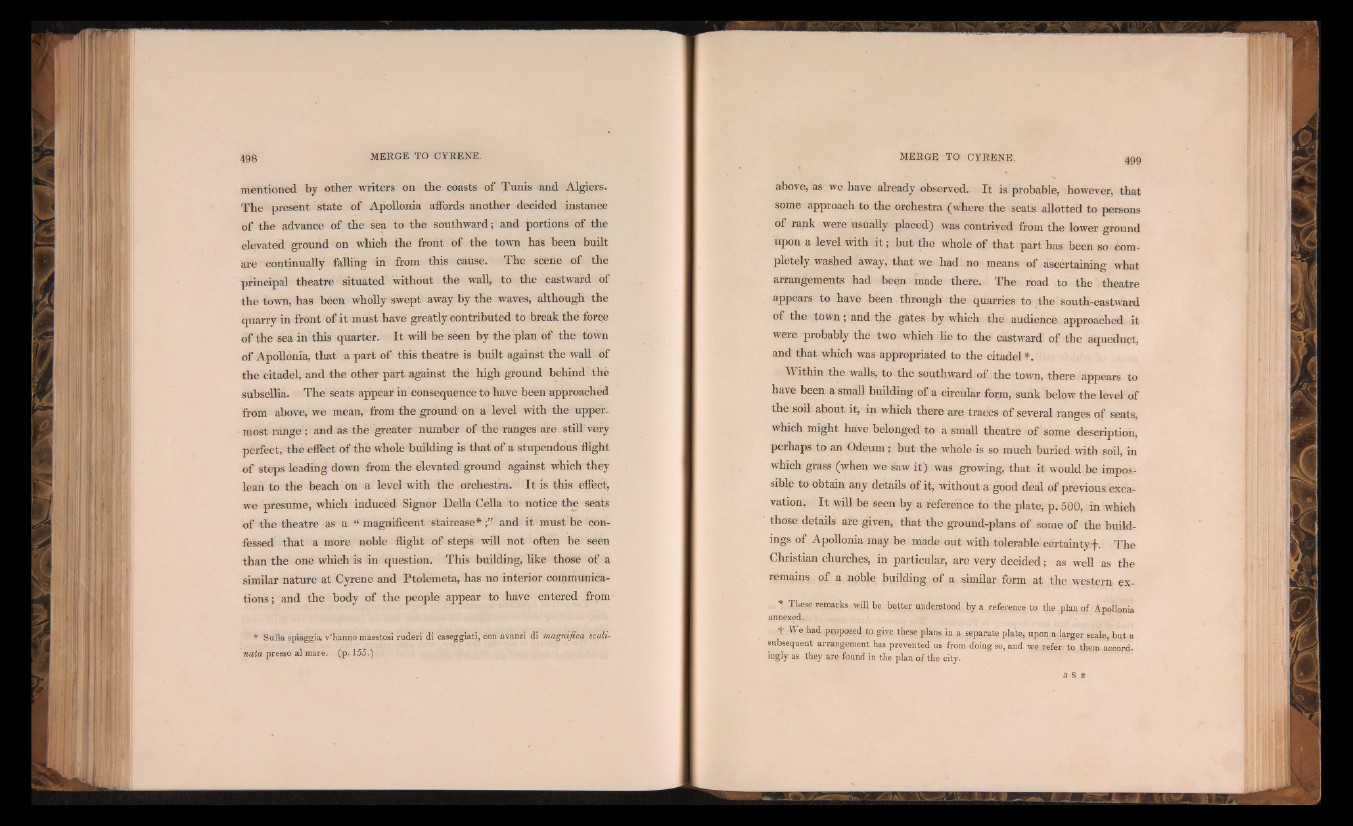
mentioned by other writers on the coasts of Tunis and Algiers.
The present state of Apollonia affords another decided instance
of the advance of the sea to the southward; and portions of the
elevated ground on which the front of the town has been built
are continually falling in from this cause. The scene of the
principal theatre situated without the wall, to the eastward of
the town, has been wholly swept away by the waves, although the
quarry in front of it must have greatly contributed to break the force
of the sea in this quarter. I t will be seen by the plan of the town
of Apollonia, that a part of this theatre is built against the wall - of
the citadel, and the other part against the high ground behind the
subsellia. The seats appear in consequence to have been approached
from above, we mean, from the ground on a level with the uppermost
range; and as the greater number of the ranges are Still very
perfect, the effect of the whole building is that of a stupendous flight
of steps leading down from the elevated ground against which they
lean to the beach on a level with the orchestra. I t is this effect,
we presume, which induced Signor Della Celia to notice the seats
of the theatre as a “ magnificent staircase*;” and it must be confessed
that a more noble flight of steps will not often be seen
than the one which is in question. This building, like those of a
similar nature at Cyrene and Ptolemeta, has no interior communications;
and the body of the people appear to have entered from
* Sulla spiaggia v’hanno maestosi ruderi di caseggiati, con avanzi di magnified scali-
nata presso al mare. (p. 155.)
above, as we have already observed. I t is probable, however, that
some approach to the orchestra (where the seats allotted to persons
of rank were usually placed} was contrived from the lower ground
upon a level with i t ; but the whole of that part has been so completely.
washed away, that we had no means of ascertaining what
arrangements had been made there. The road to the theatre
appears to have been through the quarries to the south-eastward
of the town; and the gates by which the audience approached it
were probably the two which lie to the eastward of the aqueduct,
and that which was appropriated to the citadel *.
Within the walls, to the southward of the town, there appears to
have bqen a small building of a circular form, sunk below the level of
the soil about it, in which there are traces of several ranges of seats,
which might have belonged to a small theatre of some description,
perhaps to an Odeum ; but the whole is so much buried with soil, in
which grass (when we saw it) was growing, that it would be impossible
to obtain any details of it, without a good deal of previous excavation.
I t will be seen by a reference to the plate, p. 500, in which
those details are given, that the ground-plans of some of the buildings
of Apollonia may be made out with tolerable certaintyf. The
Christian churches, in particular, are very decided; as well as the
remains of a noble building of a similar form at the western ex-
* These remarks will be better understood by a reference to the plan of Apollonia
annexed,
t VV e had proposed to give these plans in a separate plate, upon a larger scale, but a
subsequent arrangement has prevented us from doing so, and we refer to them accordingly
as they are found in the plan of the city.